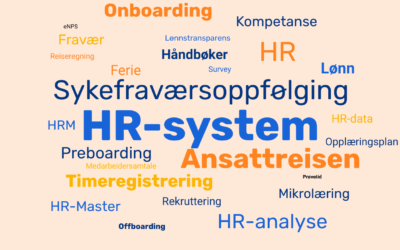How to benefit from data insights from HR analytics?

Blog series: How to simplify and improve people's lives
Apply data insights from HR analytics
Related posts
Traftec paves the way for smarter roads through structured Competence Management
In 2023, Traftec, Norway's leading electrical contractor, took a significant step towards a more digitalized everyday life by entering into an agreement...
HR glossary
Here are terms and abbreviations that you who work in HR should know – whether you are new to the profession or want a refresher. To...
HR courses
All companies that use 4human HRM should have subject matter experts with good expertise to ensure efficient operation of the system. Expertise in...


